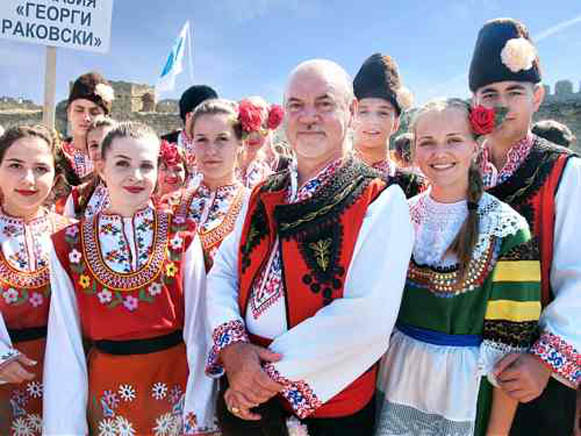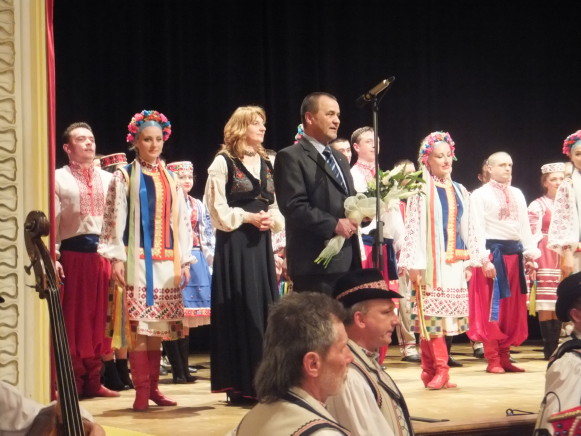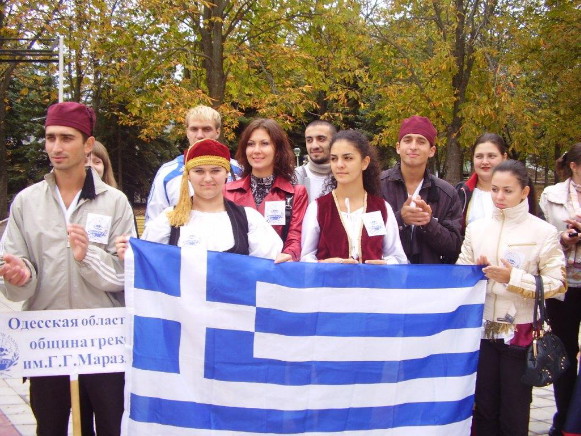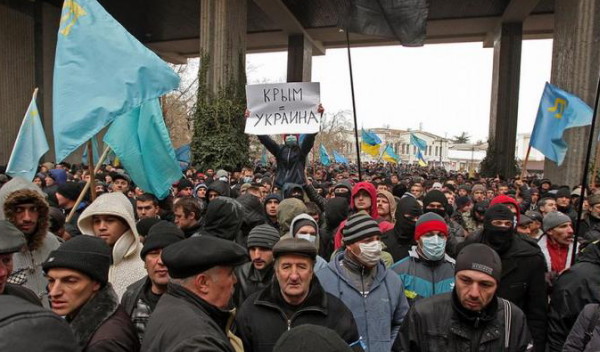National minorities
National minorities (національні меншини; natsionalni menshyny). Distinct groups of the population in a state that differ from the dominant nation in their language and culture and express a desire to form a national community. The term ‘national minority’ is largely European in usage. It usually signifies a group that lives in compact settlements or has inhabited a territory for centuries. Numerous border changes connected with the growth of large European empires often produced national minorities. Their political and legal conceptualization emerged in the 19th century, although some earlier international accords guaranteed the rights of religious and ethnocultural groups. Because for several centuries Ukrainians did not have their own state, and Ukrainian ethnographic territories were part of large empires, Ukrainians were during that time treated as a national minority in their own homeland. Only with the establishment of a Ukrainian state in 1917 were Ukrainians recognized as a nation with a defined territory.
The tsarist regime did not consider Ukrainians in the Russian Empire a separate nation, and denied them the limited cultural and national rights granted to the Baltic, Polish, and Moslem nations in the empire. In the Austro-Hungarian Empire, in contrast, Ukrainians were recognized as a distinct nation, and shared in the rights established by the empire’s multinational policies. Ukrainians living in territories in the Hungarian part of the empire were, however, discriminated against.
After the First World War Western Ukraine was divided among Poland, Romania, and Czechoslovakia, and the Western Ukrainians became national minorities in those states. In 1933 there were 6.2 million Ukrainians in Poland, 1.2 million in Romania, and 600,000 in Czechoslovakia. Over 40,000 Ukrainians lived in Yugoslavia. Unlike the Ukrainian immigrants in Western Europe and the Americas, Ukrainians living in the Eastern European states formed compact settlements. Moreover, in Poland, Romania, and Czechoslovakia they constituted majorities in the territories they inhabited, and considered those territories their ancestral lands.
Poland, Romania, Czechoslovakia, and Yugoslavia were bound by international treaties to respect the linguistic, educational, religious, and political rights of their national minorities. The Treaty of Versailles (1919) bound Poland in that respect, and the Treaty of Saint-Germain (1919), Treaty of Neuilly (1919), and Treaty of Sèvres (1920) bound Romania. Czechoslovakia and Yugoslavia were committed to such policies by the Treaty of Saint-Germain. Poland had special obligations to protect the rights of its Ukrainians and Belarusians under the terms of the Peace Treaty of Riga (1921), concluded with the Russian Soviet Federated Socialist Republic and Ukrainian Soviet Socialist Republic; it was also bound to grant Galicia regional autonomy and to recognize the political and cultural rights of the Ukrainians by decisions reached at the 1923 Conference of Ambassadors. Czechoslovakia, in addition to guaranteeing the rights of all national minorities, committed itself to granting territorial and administrative autonomy to the Ukrainian national territory of Transcarpathia (Subcarpathian Ruthenia). Both Poland and Czechoslovakia included the provision of minority rights in their legislation. Overall, however, only Czechoslovakia to some extent honored its obligations, by granting Ukrainians living on a limited territory distinctive administrative status. That was far short of the autonomy envisaged by the Treaty of Saint-Germain. Far worse violations of international accords were committed by Poland, which refused to respect its own legislation of 1922 granting Galicia provincial self-government, and in 1934 openly abrogated international provisions for the protection of national minorities, with the claim that such protection was an internal matter. Similarly, Romania reneged on its commitment to protect its national minorities, and in a 1938 government decree it excluded national minorities from the protection and guarantees of the conventions of the League of Nations.
Protection of the rights of national minorities in the interwar period was a concern of the League of Nations. It established its Minorities Commission to receive petitions from aggrieved minorities, and the Council of the league was empowered to create committees to investigate problems and work out a basis of settlement. Representatives of the Ukrainian minorities in Poland, Romania, and Czechoslovakia filed petitions with the commission, but the league lacked the authority and the mechanisms to deal with them effectively. Apart from giving publicity to minority grievances, it produced no concrete results.
The treatment of Ukrainian national minorities varied in the interwar period. Under Polish rule the Ukrainians of Galicia had more rights than the Ukrainians of Volhynia, and the Ukrainians of Polisia, the Kholm region, and Podlachia had virtually no rights. The Czechoslovak government separated the Prešov region from the province of Subcarpathian Ruthenia and incorporated it into Slovakia. Under Slovak rule the Ukrainians were subject to highly discriminatory policies. Under Romanian rule the Ukrainians of Bukovyna and Bessarabia were denied elementary rights. The Ukrainians often joined forces with Poland’s, Czechoslovakia’s, and Romania’s other national minorities to defend their interests. In Poland, for instance, Ukrainians formed electoral blocs in the 1922 and 1928 elections with the Jews, Germans, Lithuanians, and Belarusians.
Border changes after the Second World War radically altered the fate of the Western Ukrainians. Most of them now lived in territories annexed by the Ukrainian SSR. Significant Ukrainian minorities, however, remained in Czechoslovakia (the Prešov region) and Romania (the Maramureş region), where they continued living in compact settlements in what were historically Ukrainian ethnographic territories. In Poland Ukrainians were deported from their traditional homelands in the Lemko region and Sian region (see Operation Wisła) and were dispersed throughout parts of western and northern Poland annexed from Germany.
In the postwar period international agreements for the protection of national minorities lost the little force they had had. Only Romania was obliged under the terms of the 1946 Paris Peace Conference (see Paris Peace Treaties of 1947) to treat its national minorities fairly. Equitable treatment of national minorities was increasingly rooted in concepts of human rights, and the constitutions of the newly established socialist regimes in Eastern Europe included declarations on respecting the cultural and linguistic rights of their national minorities. In practice, however, those regimes paid scant attention to such rights and discriminated against their minorities. Communist Czechoslovakia and Yugoslavia had the most liberal policies toward their minorities and granted Ukrainians official minority status and attendant rights. Poland (especially until 1956) and Romania pursued the most discriminatory policies. The new Eastern European governments that in 1989 and 1990 replaced the communist regimes have committed themselves to respecting minority rights.
With the establishment of Ukrainian statehood in 1917, the Central Rada, the government of the Ukrainian National Republic (UNR) and the Hetman government pursued liberal policies toward Ukraine’s national minorities. In July 1917, 25 percent of the seats in the Central Rada were allocated to three of Ukraine’s principal minorities, the Russians, Jews, and Poles. Those groups were also represented in the General Secretariat of the Central Rada and all UNR ministries. All laws promulgated by the Central Rada were published in the languages of those minorities. The Third Universal of the Central Rada recognized the rights of national minorities to free national and cultural development. A statute granting national-personal autonomy was adopted on 22 January 1918 and later incorporated into the Constitution of the Ukrainian National Republic. The turbulent periods of the Revolution of 1917 and the Ukrainian-Soviet War, 1917–21 allowed for only a partial implementation of such rights. The Jewish and Polish national minorities managed to organize their own briefly functioning national conventions and secretariats. The Russians in Ukraine, however, refused to recognize Ukrainian independence and resisted the idea that they were a national minority. Under the Hetman government they tried to reassert their dominance. The chaos of 1919–20, which resulted in pogroms against Jewish communities, did much to cloud the positive record of 1917–18.
The Western Ukrainian National Republic of 1918–19 also adopted legislation guaranteeing the free development of its national minorities and the protection of their educational and cultural institutions.
With the consolidation of Soviet Ukraine in 1920, Ukrainians formally ceased to be a national minority there. In practice, however, until the mid-1920s they were treated as such in the Bolsheviks’ nationality policy. From the mid-1920s on, after the adoption of Ukrainization policies, the designation of national minority in the Ukrainian Soviet Socialist Republic was applied to non-Ukrainians. According to the 1926 Soviet census the minorities numbered 5.4 million, or 19.2 percent of the total population of the republic. Russians constituted the largest group (2.3 million, or 8.4 percent of the population); they were followed by Jews (1.6 million, or 5.6 percent), Poles (461,000, or 1.6 percent), Germans (376,000, or 1.3 percent), and Romanians (258,000, or 0.9 percent).
Soviet policies toward national minorities in Ukraine at first focused on propaganda and the organization of support for the regime among the groups. Bureaus or sections of the CC CP(B)U and gubernial Party committees were established to carry out propaganda in Yiddish, Polish, German, and Romanian. The Central Commission on National Minorities of the All-Ukrainian Central Executive Committee was created and was charged with ensuring the economic, cultural, and educational development of the national minorities, and with publishing propaganda in the minority languages. The People's Commissariat of Internal Affairs and the People's Commissariat of Education established national-minority sections or bureaus at the central and local level. Newspapers and journals were published in the minority languages. Areas where minorities lived in compact settlements and represented a sizable proportion of the population were designated national raions and allowed to have organs of local self-government that functioned in the minority languages. Prior to 1930 there were 9 Russian national raions, 7 German, 3 Bulgarian, 3 Greek, 3 Jewish, and 1 Polish. In addition, the Moldavian Autonomous Soviet Socialist Republic, where Moldavians (Romanians) constituted 30.1 percent of the total population, was created within Soviet Ukraine’s boundaries in 1924. Outside the territories of the national raions, 1,097 national-minority soviets were created: 450 Russian (41 urban), 254 German, 156 Jewish (68 urban), 151 Polish, 14 Moldavian (outside the Moldavian ASSR), 12 Czech, 4 Belarusian, and 3 Albanian. There were also 28 courts where proceedings were held in various minority languages. In 1927, 2,616 of 18,412 elementary schools in Soviet Ukraine were minority-language schools: 1,310 were Russian, 496 German, 393 Jewish (Yiddish), 281 Polish, 69 Moldavian, and 44 Bulgarian; 23 other schools taught in the languages of other minorities. Soviet Ukraine’s book publishing industry also serviced the needs of minorities: in 1928, for example, out of 5,695 books published, 2,216 were in Russian, 96 in Yiddish, 77 in German, 50 in Polish, 38 in Bulgarian, and 12 in other languages.
The 1929 Constitution of the Ukrainian Soviet Socialist Republic guaranteed national minorities their own raions and rural soviets, the right to use their native language, and protection against discrimination.
In the 1930s, after the liquidation of the achievements of Ukrainization and during the Stalinist terror and offensive against Ukrainian cultural development, the rights of national minorities, except the Russians, were also violated. Their raions and village soviets were abolished, restrictions were placed on the publication of newspapers and books in minority languages and on the school network, and the staffs of cultural and educational institutions serving the needs of the national minorities were purged. Institutions serving the Russian minority, however, were greatly expanded, and the Russians in Ukraine ceased to be considered a national minority and became a privileged group vis-à-vis the Ukrainian majority.
As a consequence of the Second World War and the incorporation of Western Ukraine into the Ukrainian SSR, the national composition of Ukraine changed dramatically. Most of the Jewish population had been annihilated during the Nazi occupation and Holocaust, Germans and Crimean Tatars were deported to the east by the Soviets, and many Poles were repatriated to Poland after the war (see Repatriation). At the same time new significant minorities (eg, the Hungarians) emerged. In the postwar period Russification was accelerated, and Russian became the dominant language, in the bureaucracy, mass media, and education, especially in urban centers. National minorities were encouraged to assimilate into Russian culture and were, as a rule, denied their own schools, newspapers, and theaters. Only schools for Hungarians, Romanians, and Poles living in areas bordering on their home country were maintained, for purposes of foreign policy. In 1962 there were 144 Romanian (Moldavian) schools (with 31,700 pupils), 96 Hungarian schools (20,100 pupils), and 3 Polish schools (6,000 pupils) in those areas.
The growth of the Ukrainian national movement and democratization of Ukrainian society that began in the late 1980s resulted in a new emphasis on minority rights. The Popular Movement of Ukraine (Rukh) and other democratic Ukrainian organizations actively campaigned in their favor, and new freedoms allowed national minorities to establish their own organizations, publications, schools, and theaters.
Sizable Ukrainian minorities lived in the Russian Empire and in the USSR outside the boundaries of Ukraine. In the 1920s, during Ukrainization, the authorities tried to serve the cultural and educational needs of those communities. Ukrainian schools and institutions were established in the Kuban, Slobidska Ukraine, and even the Soviet Far East, and national communist leaders, such as Oleksander Shumsky and Mykola Skrypnyk, demanded protection of the national and cultural rights of Ukrainians living outside the republic. The Stalinist offensive against Ukrainian culture begun in 1933 resulted in the total liquidation of all Ukrainian institutions in the USSR outside Soviet Ukraine. Consequently, until the late 1980s, Ukrainians living in the USSR outside Ukraine (5.1 million in 1959, 5.9 million in 1979, 6.8 million in 1989 [Volodymyr Kubijovyč estimated the figure to be 8 million]) had no community infrastructures of any kind. In 1988–9, however, in connection with the general changes occurring in the USSR, those Ukrainian minorities began organizing their own community organizations. Among the most active are those in Lithuania and Moscow. Moscow’s Slavutych club launched a campaign to organize the sizable Ukrainian minority living in the RSFSR. Throughout 1989 and 1990 many new Ukrainian periodicals were established by the organizations, and Ukrainian-language instruction was begun in several centers, including ones in the Far East. The organizations campaigned, with little success, for public policies to protect the rights of national minorities.
BIBLIOGRAPHY
Natsional'ni menshosti Radians'koï Ukraïny (Kyiv 1931)
Janowsky, O. Nationalities and National Minorities (with Special Reference to East-Central Europe) (New York 1945)
Horak, S. Poland and Her National Minorities, 1919–39: A Case Study (New York 1961)
Chyrko, B. ‘Natsional'ni menshosti na Ukraïni v 20–30-kh rr.,’ UIZh, 1990, no. 1
———. Do istoriï mizhnatsional'nykh protsesiv na Ukraïni,’ UIZh, 1990, nos 6, 8, 11; 1991, nos 1–2
Hontar, O. ‘Deiaki pytannia mizhnatsional'nykh vidnosyn na Ukraïni v 20-tykh rokakh,’ UIZh, 1991, no. 7
Bohdan Krawchenko, Vasyl Markus
[This article originally appeared in the Encyclopedia of Ukraine, vol. 3 (1993).]
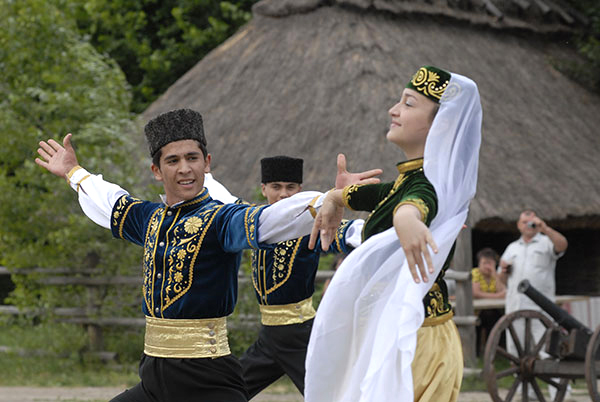
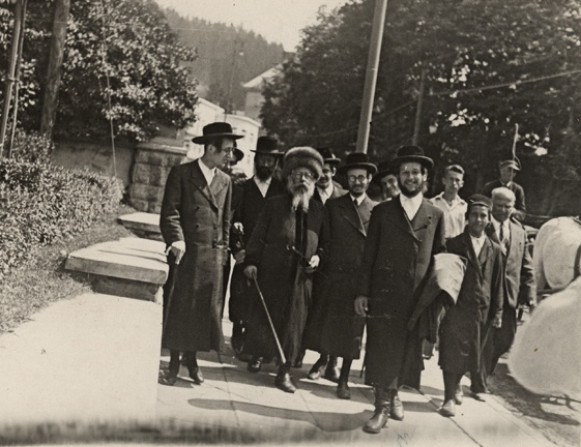
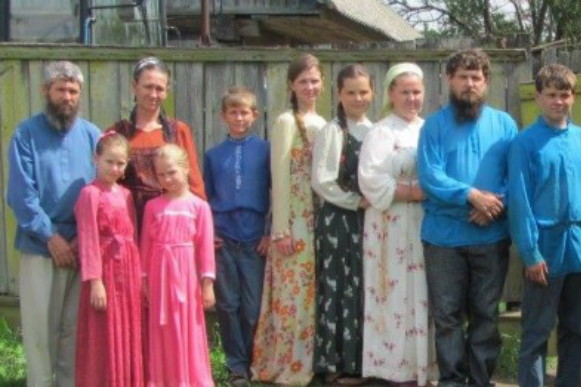
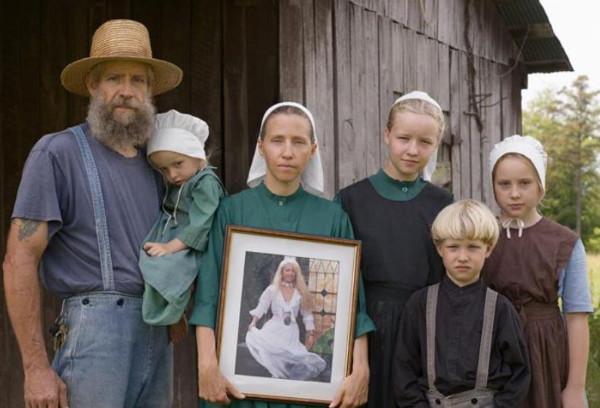
%20in%20Volhynia%20(early%2020th%20century).jpg)
